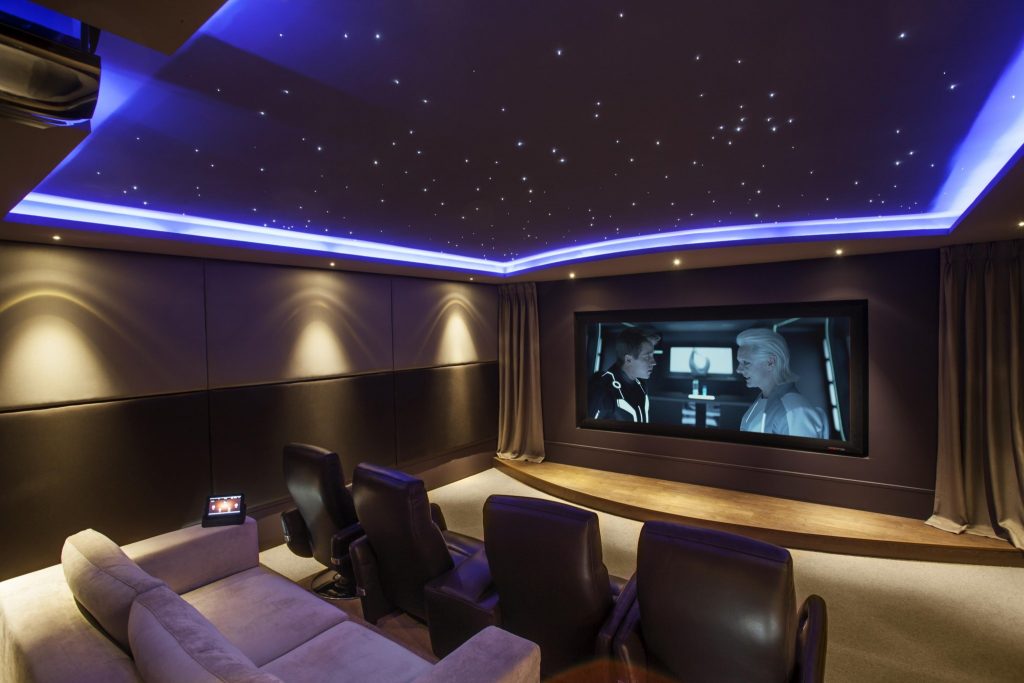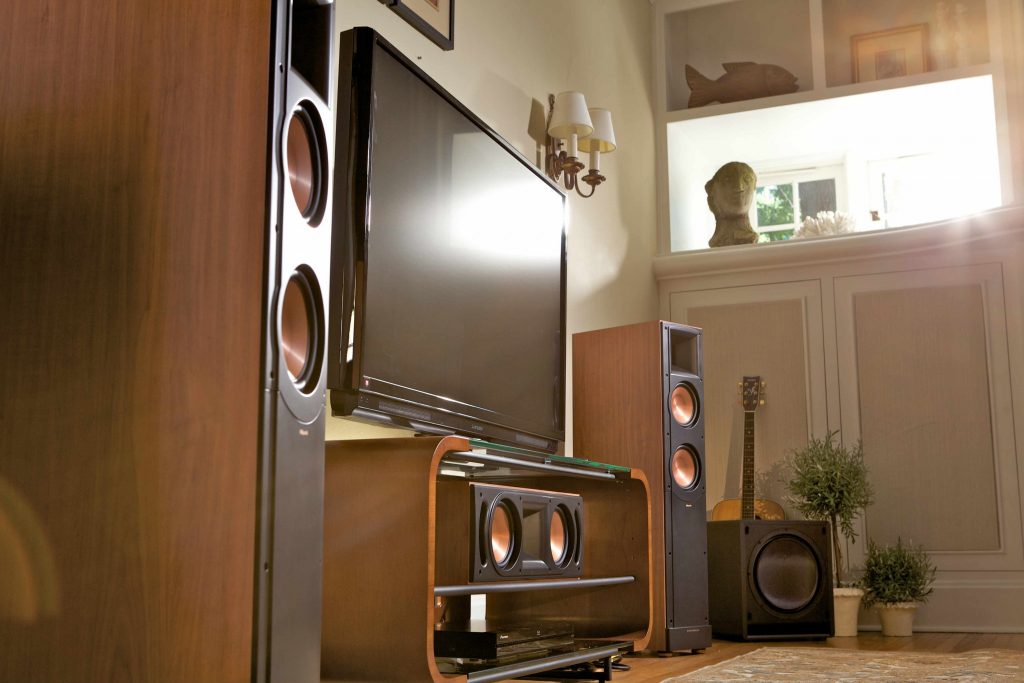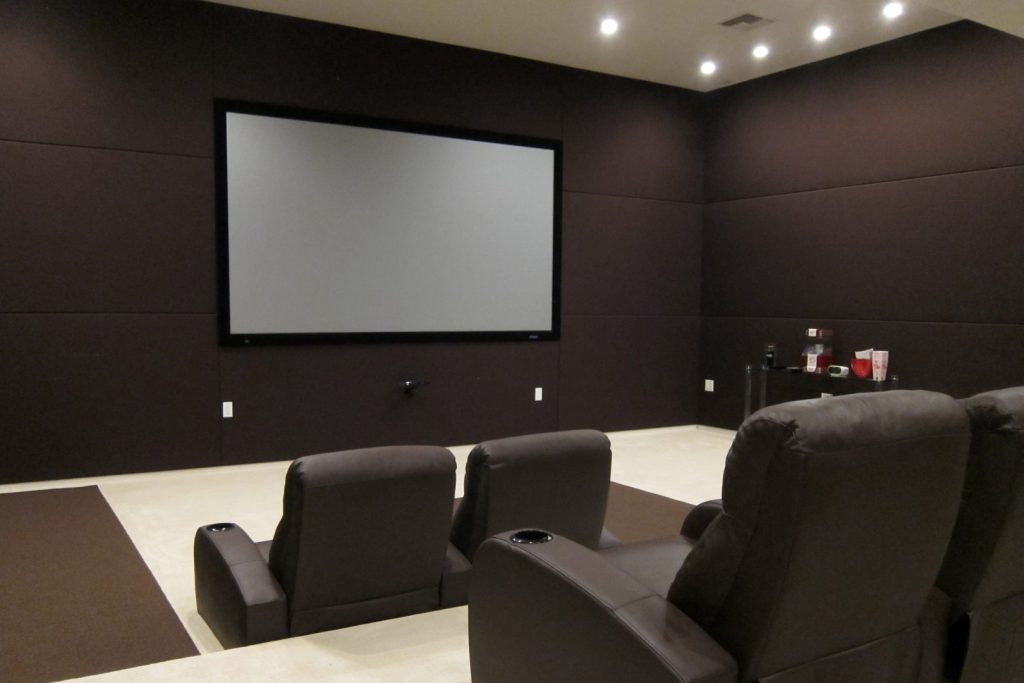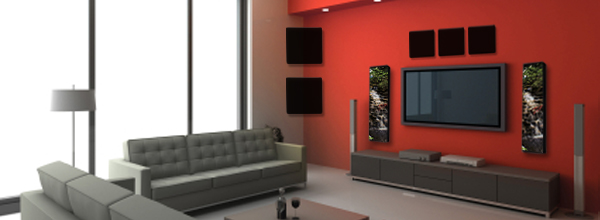19
Dec
2016
Home Theatre Room Design: 5 Tips for Acoustic Heaven

Reading Time: 3 minutes
Home Theatre Room Design is often one of the things that are done completely wrong.
Filled with high end equipment but often lacking in acoustic finesse, the typical home theatre experience is usually a tangle of overly dead sound, flabby bass and confused acoustics. Fortunately, it is not hard to build your home theatre if you follow some rules.
Picture this. You invite your friends over to your house to your new home theatre that your interior designer perfected. It has all the bells and whistles – Steinway Lyngdorf speakers, state of the art amplifiers, a 4K Sony projector and subwoofers that go so low that they make your vision blur. You pop in the Transformers disc. Explosions go off left and right, there is a car chase, Bumblebee transforms and flies over your head. You’re on cloud nine. “This is amazing!”, you think. You turn to your friend and ask him his experience and he answers with one word, “Ok”. You’re dumbfounded. What went wrong? Why did your friend not hear how amazing your theatre is?
#1 – Place your Home Theatre speakers correctly
Dolby Digital, ITU, Dolby Atmos, DTS-X, THX, Auro-3D? The increasing multiplicity of standards in the home theatre world often leaves the typical home theatre builder flustered. Often, the most important topic as it applies to acoustics is speaker placement. As to which standard to follow, it all boils down to a matter of taste. Each of them is close enough in location configuration to work with the other standards. Just choose the standard you like and stick to it.
On the other hand, if you are going for 3D sound setups like Dolby Atmos, the key is to place as many speakers as allowable by the standard i.e. up to 34 speakers for the Dolby Atmos Home Theatre standard. 3D sound algorithms such as Dolby Atmos benefit greatly from being able to recreate the virtual sound field using more speakers.
Concerning speaker mounting, all speakers should be installed on walls using anti-vibration mounts.
#2 – Watch the Rattle
With subsonic bass and the trend towards lightweight construction, it is not unfathomable that rattling of walls and ceilings has become a huge concern. Tackling rattling by using typical timber frame construction is often the go-to solution for traditional home theatre builders. However, this proves to be a needlessly expensive affair due to the extra labour involved in timber-based construction.
At Soundzipper, we combat the effects of rattling by using a dual approach. Our home theatre room design approach involves applying insulation tape between the drywall and metal studs. The insulation tape ensures that there are no gaps between the studs and board. Secondly, all our wall designs involve a double layer construction with a constrained damping layer such as Tecsound SY50 sandwiched between the boards. The damping layer has the dual effect of reducing sound re-radiation and amplitude of any stray vibrations. This, in turn, creates an experience of tight bass.
#3 – Cineplex Design and Home Theatre Room Design is not the same
If you searched the web for pictures of home theatres, you will often find home theatres with walls totally wrapped in fabric. Although suitable for commercial cinemas, this is totally unsuitable for the private home theatre. This error in design probably stemmed from blindly following the design of commercial cinemas. Private theatres treated with absorptive fabric panels often sound dead and empty. Typical sound complaints include lack of soundstage width, definition and sense of space.
When designing acoustic treatment, it is important to take into account the volume of the room, the speaker placement, seat positioning and the furniture and fittings in the room. Place acoustical treatment asymmetrically to enhance the width of the soundstage. Enhance early reflections rather than eliminating them by using diffusion. As much as possible, distribute treatment evenly around the room so speakers “see” similar treatment.
#4 – Bass Traps are essential / Why you should have multiple subwoofers
There is no better representation of the quality of a home theatre than the quality of its bass. Bass frequencies provide a sense of envelopment that, when missing, often make us question why we bought that 10,000 dollar subwoofer in the first place. Oftentimes, the fault lies not with the equipment but the room modes that cause cancellation in the bass frequencies. To handle these room modes, place pressure/resonance-based bass traps at high-pressure areas. Even out the bass response for the LFE channel by placing multiple subwoofers in the room at the slight expense phase accuracy. (Toole, 2007)
#5 – Soundproof your Home Theatre with a Room in a Room
For the home theatre aficionado, only the best would suffice. Soundzipper recommends full room in a room construction for all our home theatre designs. There is a subtle beauty into stepping into a fully floated room and being transported into a totally different space. Neighbours, the weather, birds and cars will never interrupt your enjoyment of your theatre. And… it also gives you an excuse to not hear your significant other.
Feel that I left something out? Send me a comment below and I’ll include it in the next part of my series on home theatre tips.
References
Sound & Vision Magazine (2007) – Advice from an Audio Insider (Floyd Toole)









My husband and I love watching movies, especially MCU movies. So for our 5th anniversary, we plan to buy home theater systems and DVDs to have a movie marathon in our home. I love that you suggested making a room in a room to have an undisturbed movie experience since the sound of the cars and neighbors outside would not reach the room. Thanks!
Thank you for the terrific article
It works very well for me
These designs tips are infact really great. As in fact we are going to get ourselves a new room for the same.